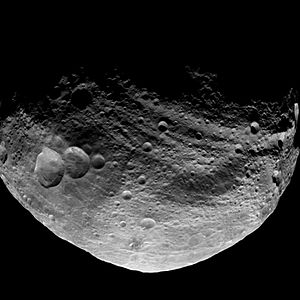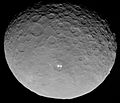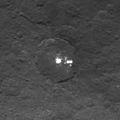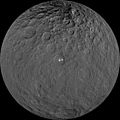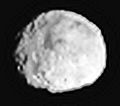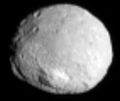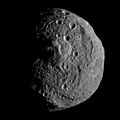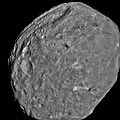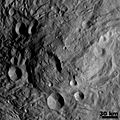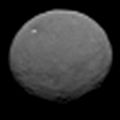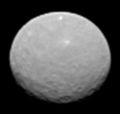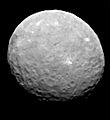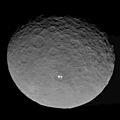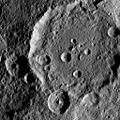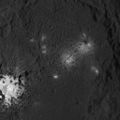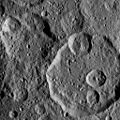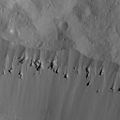Dawn (spacecraft) facts for kids
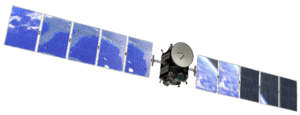
Illustration of the Dawn spacecraft
|
|
| Mission type | Multi-target orbiter |
|---|---|
| Operator | NASA / JPL |
| Website | http://dawn.jpl.nasa.gov/ |
| Mission duration | Planned: 9 years Final: 11 years, 1 month, 5 days |
| Spacecraft properties | |
| Manufacturer | Orbital Sciences · JPL · UCLA |
| Launch mass | 1,217.7 kg (2,684.6 lb) |
| Dry mass | 747.1 kg (1,647.1 lb) |
| Dimensions | 1.64 × 19.7 × 1.77 m (5.4 × 65 × 5.8 ft) |
| Power | 10,000 watts at 1 AU 1,300 watts at 3 AU |
| Start of mission | |
| Launch date | September 27, 2007, 11:34 UTC |
| Rocket | Delta II 7925H |
| Launch site | Cape Canaveral SLC-17B |
| Contractor | United Launch Alliance |
| End of mission | |
| Disposal | Uncontrolled/stable orbit |
| Last contact | 30 October 2018 |
| Flyby of Mars | |
| Closest approach | February 18, 2009, 00:27:58 UTC |
| Distance | 542 km (337 mi) |
| 4 Vesta orbiter | |
| Orbital insertion | July 16, 2011, 04:47 UTC |
| Orbital departure | September 5, 2012, 06:26 UTC |
| 1 Ceres orbiter | |
| Orbital insertion | March 6, 2015, 12:29 UTC |
 Dawn mission patch Discovery program
|
|
Dawn is an unmanned NASA space probe. It has orbited and studied the asteroid Vesta, and it is currently orbiting the dwarf planet Ceres. Both Vesta and Ceres are in the asteroid belt. Dawn is the first spacecraft to visit Ceres and the first to visit Vesta. It also is the first spacecraft to orbit two extraterrestrial bodies.
Dawn was launched on September 27, 2007 at Cape Canaveral Air Force Station aboard a Delta 7925-H rocket. It then travelled to Mars for a gravity assist, making its closest approach to Mars in February 2009.
Next, Dawn set off for Vesta. It went into orbit in July, 2011. On September 5, 2012, Dawn left Vesta and headed for Ceres. It began to orbit Ceres on March 6, 2015.
Images for kids
-
SERT-1: first ion engine NASA spacecraft; launched on July 20, 1964.
-
Dawn launching on a Delta II rocket from Cape Canaveral Air Force Station Space Launch Complex 17 on September 27, 2007
-
The snowman shaped craters on Vesta
-
April 23, 2015 1st Map Orbit - RC3 13,600 km (8,500 mi) (view on commons)
-
June 6, 2015 2nd Map Orbit - SRVY 4,400 km (2,700 mi) (view on commons)
-
August 17, 2015 3rd Map Orbit - HAMO 1,470 km (915 mi) (view on commons)
-
December 10, 2015 4th Map Orbit - LAMO 385 km (240 mi) (view on commons)
-
October 5, 2016 5th Map Orbit - XMO2 1,480 km (920 mi) (view on commons)
-
June 9, 2018 10th Map Orbit - XMO7 35 km (22 mi) (view on commons)
See also
 In Spanish: Dawn (sonda espacial) para niños
In Spanish: Dawn (sonda espacial) para niños


